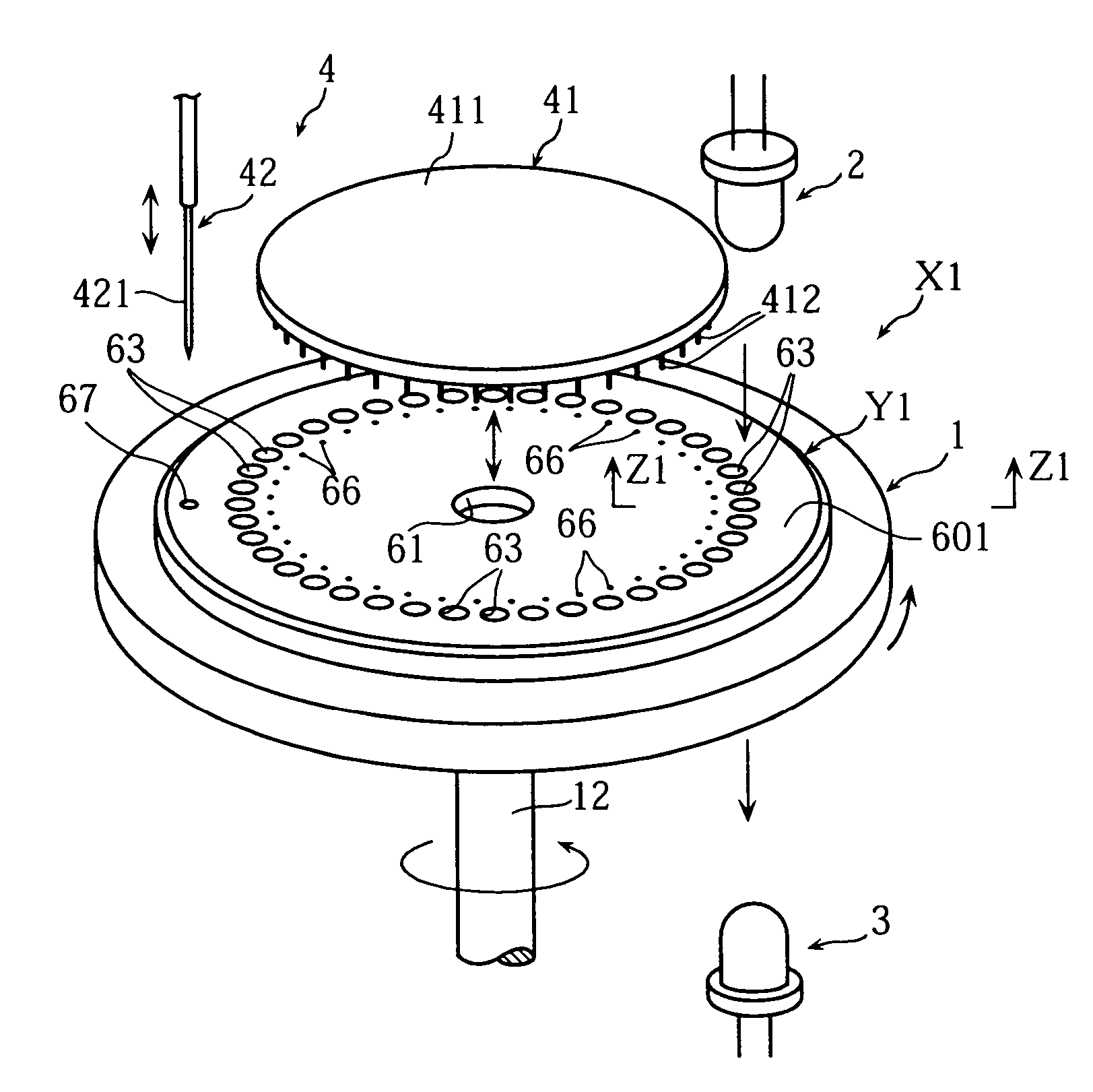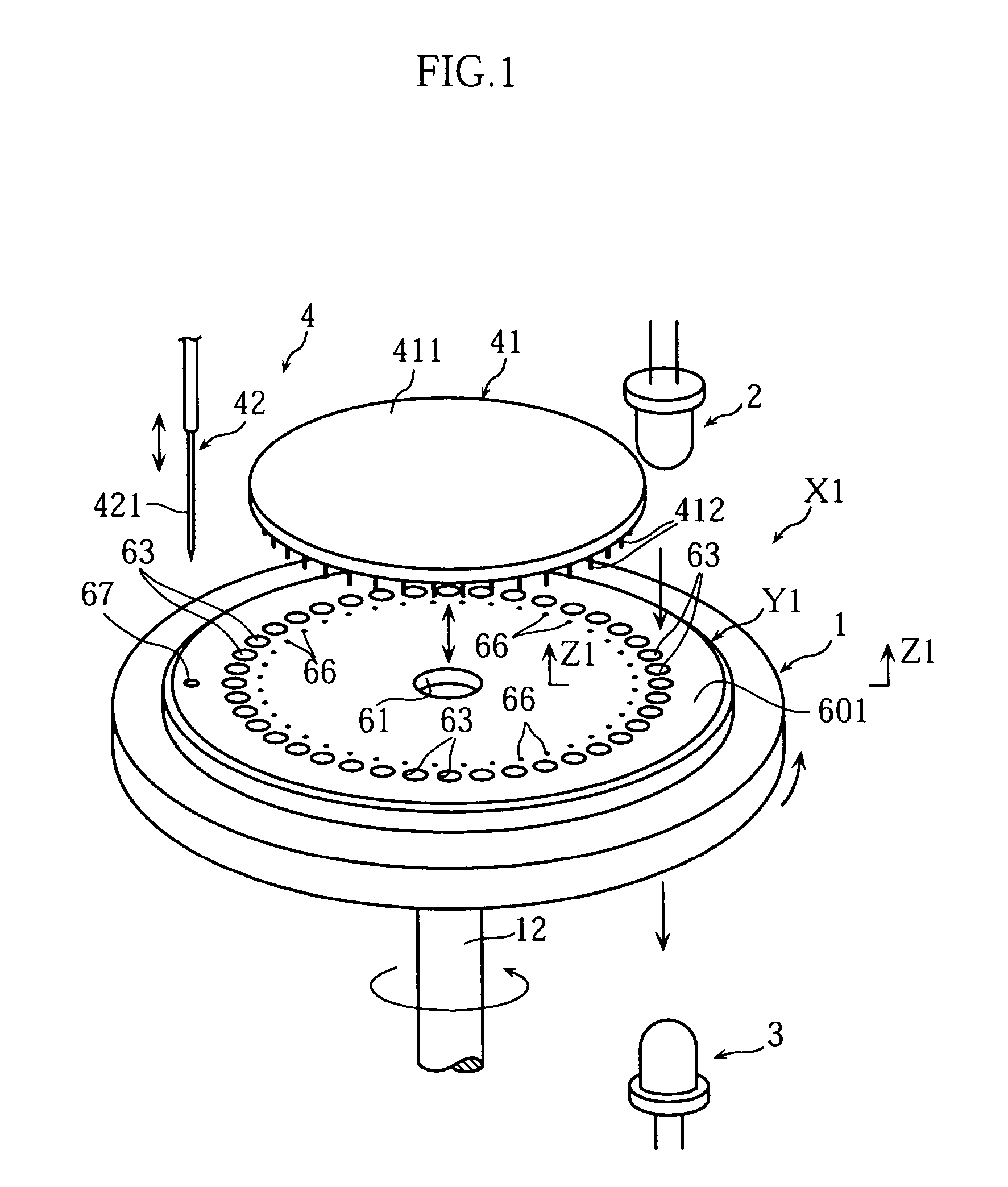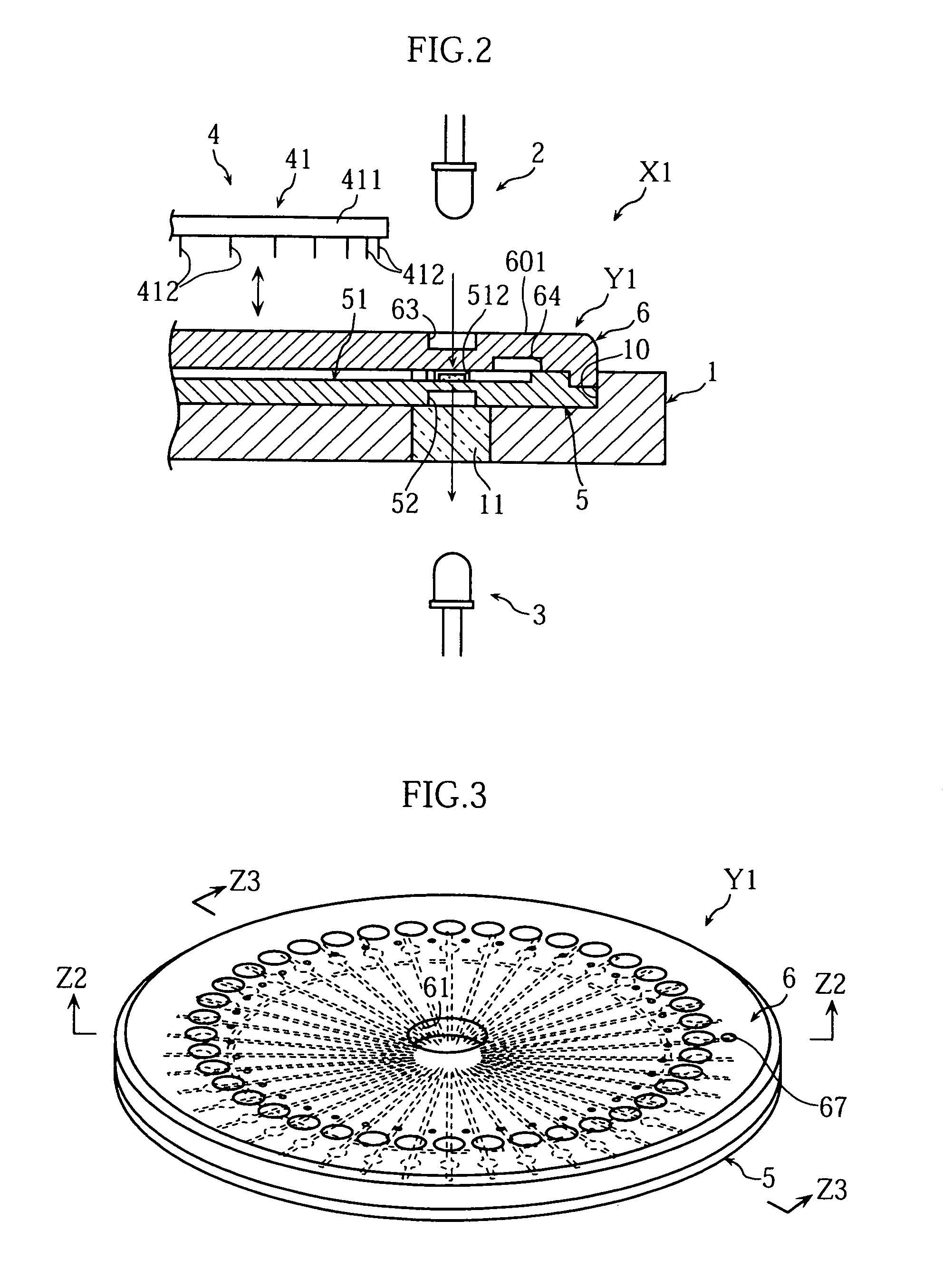Analyzing article, analyzer and method of analyzing a sample using the analyzing article, and a method of forming an opening in the analyzing article
a technology of analyzing article and sample, applied in the field of analyzing article, can solve the problems of difficult control of the above mentioned transport time, unpractical manufacturing cost, and complex steps required for the formation of the micro pump and the micro valve, so as to reduce the dissipation of optical energy, increase the temperature of the target region efficiently, and improve the effect of heat storage capacity
- Summary
- Abstract
- Description
- Claims
- Application Information
AI Technical Summary
Benefits of technology
Problems solved by technology
Method used
Image
Examples
embodiment 1
[0191]In the present embodiment, a laser diode unit manufactured by Sakai Glass Engineering Co., Ltd. was used to see if an opening can be formed in a green resin sheet. The laser diode unit incorporated, as the light source, a laser diode (HL6501MG; manufactured by Hitachi, Ltd.) which is capable of outputting a red light having a mean wavelength of 658 nm. The laser beam had a focal length of 3 mm, formed a spot of a 100 μm diameter at the focal point. The output of light from the laser diode was set to 27.5 mW, and the application time of the laser beam to the green sheet was varied as shown in Table 1. As for the green resin sheet, 100 weight parts of ethylene-vinyl acetate copolymer (EVA) (28% ethylene-vinyl acetate content, 58° C. melting point) hot melt sheet (manufactured by Nittoshinko Corporation) was mixed with a 2 weight parts of copper phthalocyanine serving as a green colorant, and the sheet thickness was controlled to be 10 μm. This green resin sheet absorbed a 658 nm...
embodiment 2
[0193]The present embodiment was identical with Embodiment 1, differing only in that the green resin sheet had a thickness of 50 μm (light absorption rate to the 658 nm wavelength light was about 100%), and that the laser application time was varied as shown in Table 2. Results are shown in Table 2, FIG. 42A, FIG. 42B, FIG. 43A and FIG. 43B. Each of FIG. 42A and FIG. 43B shows the green resin sheet magnified by 30 times after the laser beam was applied for 0.50 seconds, 0.80 seconds, 1.00 second and 2.00 seconds respectively.
[0194]
TABLE 2Green Resin Sheet (50 μm)Application Time (sec.)Microscopic Observation0.50No holes.0.60No holes.0.70No holes.0.80No holes.0.90A hole formed (c. 0.1 mm)1.00A hole formed (c. 0.2 mm)1.10A hole formed (c. 0.2 mm)1.20A hole formed (c. 0.2 mm)2.00A hole formed (c. 0.4 mm)
embodiment 3
[0195]In the present embodiment, observation was made to see if an opening can be formed in a black resin sheet by a laser beam. As for the black resin sheet, 100 weight parts of EVA were mixed with a 1.5 weight parts of carbon black serving as a black colorant, and the sheet thickness was controlled to be 10 μm. This black resin sheet absorbed a 658 nm wavelength light at a rate of about 99%. The laser beam was applied under the same conditions (except for the application time) as in Embodiment 1. Results are shown in Table 3. FIG. 44A and FIG. 44B each show the black resin sheet magnified by 30 times after the laser beam was applied for 1.0 second and 3.0 seconds respectively.
[0196]
TABLE 3Black Resin Sheet (10 μm)Application Time (sec.)Microscopic Observation1.00A small hole formed (>0.1 mm)2.00A small hole formed (>0.1 mm)3.00A small hole formed (>0.1 mm)3.50A hole formed (c. 0.4 mm)4.00A hole formed (c. 0.8 mm)
[Discussion on the Results]
[0197]In Embodiment 1, in which the laser ...
PUM
| Property | Measurement | Unit |
|---|---|---|
| depth | aaaaa | aaaaa |
| depth | aaaaa | aaaaa |
| width | aaaaa | aaaaa |
Abstract
Description
Claims
Application Information
 Login to View More
Login to View More - R&D
- Intellectual Property
- Life Sciences
- Materials
- Tech Scout
- Unparalleled Data Quality
- Higher Quality Content
- 60% Fewer Hallucinations
Browse by: Latest US Patents, China's latest patents, Technical Efficacy Thesaurus, Application Domain, Technology Topic, Popular Technical Reports.
© 2025 PatSnap. All rights reserved.Legal|Privacy policy|Modern Slavery Act Transparency Statement|Sitemap|About US| Contact US: help@patsnap.com



